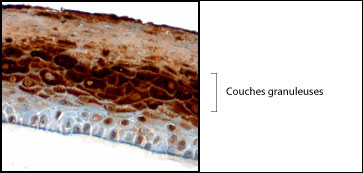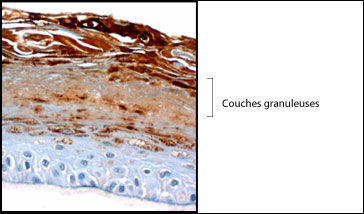Notre domaine d'activité
Le laboratoire est dédié à la culture cellulaire afin de proposer des prestations de culture à nos clients. Cela va de la culture en mono-couche de lignées cellulaires ou de cellules primaires jusqu'à la reconstruction tissulaire.
Un service complet est proposé puisque nous pouvons réaliser de nombreux tests de produits chimiques sur nos cultures.
Les supports de reconstruction tissulaire sont multiples : de l’insert individuel à la plaque HTS en passant par des inserts de culture suspendus.
Nos prestations s'adaptent aux besoins de nos clients.
Nos clients
• Industrie pharmaceutique
• Industrie de la cosmétique
• Industrie vétérinaire
• Laboratoire de formulation
• laboratoire de recherche.
Environnement
Au sein de Sterlab, une salle blanche de 100 m2.
La manipulation des cellules se fait sous une hotte à flux vertical de type PSM ce qui permet la culture de cellules de niveau de sécurité de type 2.
Une vérification quotidienne des paramètres aérauliques de la salle ainsi qu'une recherche de germes bimensuelle permet de contrôler de façon efficace l'atmosphère.
De plus, nous proposons des services associés (études toxicologiques, prestations histologiques) pour l'industrie pharmaceutiques, chimiques, cosmétologiques, laboratoire de recherche…
Sterlab a reçu l'accréditation ISO 9001 version 2008.
L’équipe
La culture cellulaire et le développement des tissus se fait par du personnel qualifié avec plus de 10 ans d'expertise dans le domaine de la reconstruction tissulaire.
Description
During epidermal tissue reconstruction, the addition of a “psoriasis inducer” to the culture medium generates morphological tissue changes that are often observed in psoriasis or dry skin.
In the granular cell layer, profilaggrin changes to filaggrin to form the cytoplasmic matrix of the corneocytes. Filaggrin is then proteolyses into polar free amino acids, urocanic acid and pyrrolidone carboxylic acid that are parts of the “Natural Moisturizing Factors” to the surface of the corneum stratum.
This moisturizing is necessary for the enzymes involved in desquamation. The absence of “moisturizing factors” normally derived from filaggrin explains very dry skin of some people and the lack of desquamation.
Histology of the psoriasis-like epidermal model
• HE staining

Normal epidermal model at day 17 (negative control)

Psoriasis-like epidermal model at day 17
The addition of the “psoriasis inducer” causes hyperplasia of the epidermal cell layers and an increase of the total thickness of the epidermis.
• Filaggrin labelling

Normal epidermal model day 17 (negative control).

Psoriasis-like epidermis at day 17
The filaggrin staining is localized at the granular layer of the negative control. This labeling is specific to the presence of keratohyalin granules containing filagrin molecules. A clear reduction of this labeling is observed on the “psoriasis like” epidermal model.









